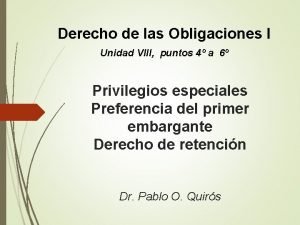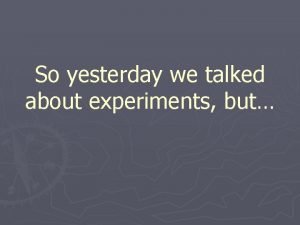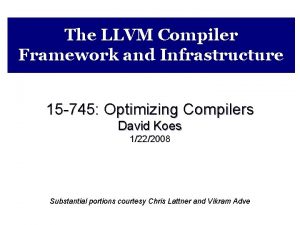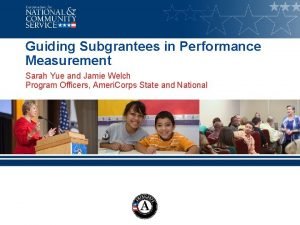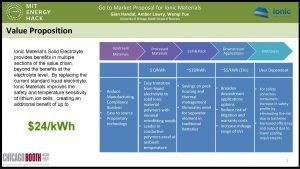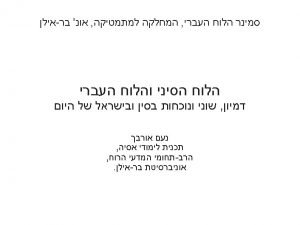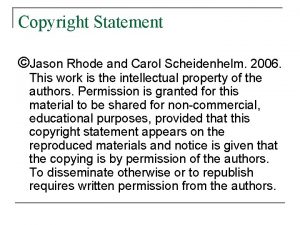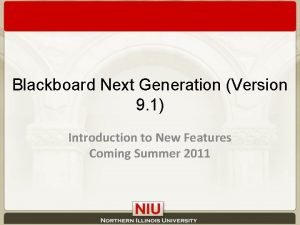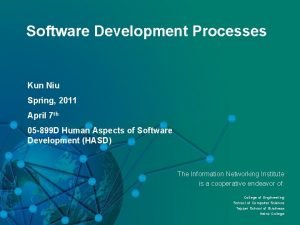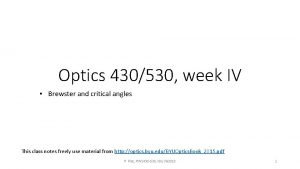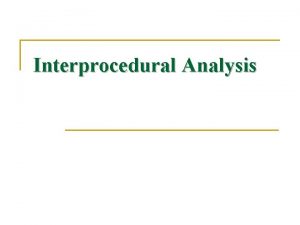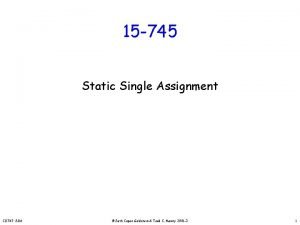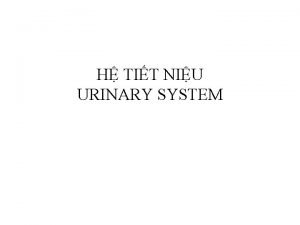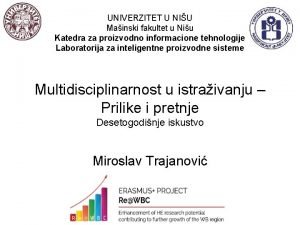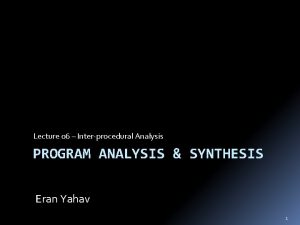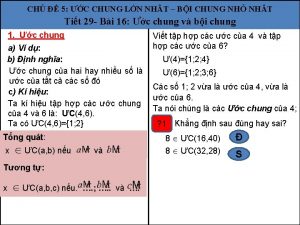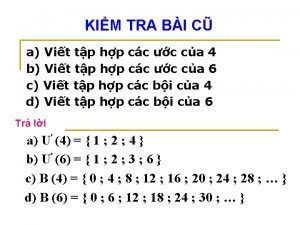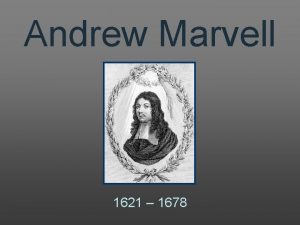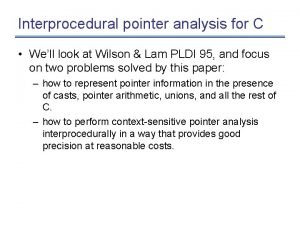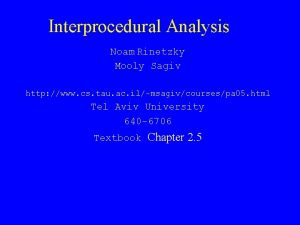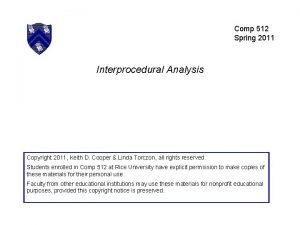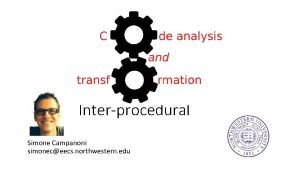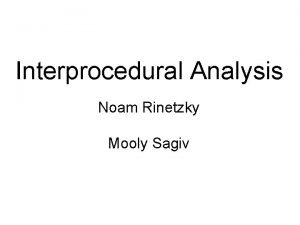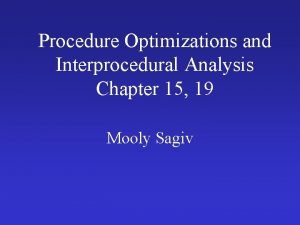15 745 Interprocedural analysis Andrew Chung Yue Niu

























- Slides: 25

15 -745 Inter-procedural analysis Andrew Chung, Yue Niu

Introduction: Inter-procedural optimization ● Compilers ○ ○ ○ ● Operate on single translation unit (module) (src + headers) to produce obj files Optimizations usually applied within module Linker combines obj files into resulting binary Inter-procedural optimization (IPO) ○ ○ Optimizations at/above the module scope e. g. , function inlining ● Cross-module optimization (CMO) ○ ○ Optimizations across modules Link-time optimization (LTO): an approach that performs optimizations at link time ● Whole program optimization (WPO) ○ An aspect of CMO, but can think of as same

Thin. LTO: Scalable and Incremental LTO Teresa Johnson, Mehdi Amini, Xinliang David Li

Paper introduction ● Problem: LTO expensive ○ Bottleneck: Typically, CMO step is serial ■ Little parallelism, dep tracking, and non-linear algo → memory + build time intensive ● Goals ○ ○ ○ ● Improve on compilation speed vs traditional LTO without compromising quality No strict reliance on profile runs Incremental build support This paper. . . ○ ○ ○ Runs a thin link-time cross-module analysis phase using module summaries Push IR transformation to parallel module optimization phase Support incremental builds using hash(compiled IR + link-time analysis result) ■ Skip objects to compile + code-gen if no hash diff

3 -phase design ● Phase 1: Compilation ○ ○ Frontend translates source to IR (obj files) Generate module summary for each obj ■ Contains func & global var metadata for P 2 ● Phase 2: Thin link ○ ○ Combine module summaries into summary idx to create call/reference graphs (CG) Serial analysis with only module summaries ■ Operations on IR (loading + analysis + transformations that req. dep) is serial ■ Usually most costly → make bottleneck fast! ● Phase 3: Backend compilation ○ Parallel IR transformation based on analysis ■ Dependent components ID’d and loaded

Implemented cross module optimizations (CMO) ● Function importing: ID funcs to import into module for transformation ○ ○ ○ Application: Func inlining, which requires imported external functions for transformation Serial analysis: Use heuristics + summary idx to see if inline-likely ■ Traverse CG and evaluate “profitability” based on func summary ● Traverse down chains until not profitable ● More lines/nested calls to reach ⇒ less likely to be inlined ■ Include function into module if profitable for parallel transformation ■ Profile-guided optimization optional Transformation: Evaluate the inline decision, can be parallel since external module included ● Internalization: Flag global symbols if only referenced by single module ○ ○ Serial analysis: Perform flagging using reference graph Transformation: “Internalize” flagged symbol references into the single module ●. . . and others!

Evaluation: runtime performance SPEC cpu 2006, comparable/only a bit worse than GCC LTO, where 0% = no LTO

Evaluation: build performance Compiling Chromium: significantly lower memory footprint + shorter time Other more fine-grained experiments and benchmarks available in paper

Incremental Whole Program Optimization and Compilation Patrick W. Sathyanathan, Wenlei He, Ten H. Tzen

Introduction ● Problem ○ Edit-compile-test cycle with WPA/O takes too long ● Goals ○ ○ ● No diff between incremental build vs full rebuild Preserve debugging experience in incremental build This paper ○ ○ Proposes ■ An extensible incremental compilation framework ■ An incremental WPA algorithm that does not lose precision Details data structures, techniques, and edge cases

Framework ● Components ○ ○ ○ CIL = IR in Visual C++ world IPDB (incremental program database) stores dependencies & artifacts between compilation LINK here refers to native linking

Incremental compilation algorithm ● ID changed functions with checksum diff vs IPDB lookup ● ID affected functions with incremental whole program analysis (later) ○ // Callers of affected funcs to re-eval inline decisions — inliner may decide differently ● For each function in post-order ○ ○ ○ If affected: re-run all compilation phases Otws: compile to post-inline (cheap because early), run cksm diff, and compile rest if changed ■ // IPDB doesn’t store inline decisions — expensive (n 2 CG edges w/ negative decisions) If recompilation info changed vs IPDB lookup, add callers to affected functions ● Compute unaffected funcs (= all - affected), then ID only reachable ones ○ // removes deleted code -- otws unaffected but deleted code put back in ● Update debug info of unaffected funcs to reflect changes ○ // e. g. , code-lines can change

Incremental WPA ● Only analyze the minimal set of functions affected by an edit ● Start from the set of directly edited functions S ○ ○ For each callee c of f in S, reanalyze callers of c Recompute entry data value of c. If changed, add to c S

Experiments ● ● VC/C++ codebase 1 mil LOC, 52 K functions More than 7 X improvement in build times Large spikes: forward integration from parent branch

Experiments ● ● Windows codebase, edits at 2 week intervals Link time 3 h => 2 h 20 m (22% improvement) 16% functions recompiled I/O bound: source files, CIL and COFF object files, and the IPDB contends for cache ● Smaller windows binaries:

Inference of peak density of indirect branches to detect ROP attacks Mateus Tymburiba, Rubens E. A. Moreira, Fernando Magno Quintao Pereira

Return Oriented Programming (ROP) ● Form of attack based on buffer overflow ○ ○ ○ Overwrites return address of function Chains together gadgets Turing complete



Universal Threshold ● ROP require gadgets to be small ● Idea: look at frequency of indirect branches via a sliding window ● Exploit Database: 10 -13 is universal threshold

Evading Universal Threshold ● Possible to interpose no-op gadgets ○ Cannot change registers or stack ● Static initializer ● Alignment block

Specific Threshold ● Compute indirect branch frequency for each application ● More precise ● Reduce space of available gadgets

Static Inference of Specific Thresholds ● (IPD) Given a Program P, and integers K and R, is there an execution trace of P with no more than K instructions and R indirect branches? ● δCFG: simplified CFG for IPD ○ ○ Nodes are BBs recording only the number of instructions (n) Node types: ■ BBL(n) : BBs that end in direct branches ■ RET(n, l) : BBs that end in returns, where l is the list of nodes this node can return to ■ FUN(n, e, r) : BBs that end in calls, where e is the first BB of the callee, and r is the node immediately after the caller

Algorithm ● Instance (P, K) ● For all nodes n in the δCFG: ○ Explore n with empty call stack and budget K ● Explore n stack K: ○ ○ ○ n = RET(m, l) ■ If stack is empty: do explore l stack (K-m), return the maximum density ■ Else, stack = n: : s. Do explore n s (K-m) n = BBL(m, l, r) ■ Return max of {explore l stack (K-m), explore r stack (K-m)} n = FUN(m, e, r) ■ Return explore e (r: : stack) (K-m)

Experiments
 Chúng tôi đứng trên núi chung
Chúng tôi đứng trên núi chung Art 745 codigo civil y comercial
Art 745 codigo civil y comercial 23745 kg to milligrams
23745 kg to milligrams Sls 745
Sls 745 745,7 vatov
745,7 vatov 15-745
15-745 Yue minjun biography
Yue minjun biography Chuang qian ming yue guang li bai
Chuang qian ming yue guang li bai Chi wanfan
Chi wanfan Sara yue
Sara yue A question of dowry by siew yue killingley
A question of dowry by siew yue killingley Wenqi yue
Wenqi yue Nong li 7 yue
Nong li 7 yue Ivan yue
Ivan yue Yue kuo
Yue kuo Yue
Yue Niu webcourses
Niu webcourses Seasite niu edu tagalog
Seasite niu edu tagalog Actor affix
Actor affix Qu blackboard
Qu blackboard Niu
Niu Cooperative business definition
Cooperative business definition Niu
Niu Qian niu
Qian niu Niu
Niu Artemus ward niu
Artemus ward niu

